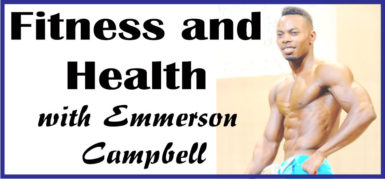 As a personal trainer, I spend quite a lot of my time in gyms. Needless to say, I have seen my fair share of exercises being done wrong by regular gym goers and even by trainers.
As a personal trainer, I spend quite a lot of my time in gyms. Needless to say, I have seen my fair share of exercises being done wrong by regular gym goers and even by trainers.
The plank is one on a long list of exercises that I have seen performed incorrectly too many times.
Planks are a popular core exercise as they train your midsection muscles to work as they do so often in nature – as a static stabilizer. In many exercises and movements, your core muscles work together to prevent excess movement of the spine. For example, when you squat and deadlift or when you push or pull against something heavy.
However, as good as the plank is for developing core strength and stability, it is an exercise open to abuse and many people are guilty of doing this exercise wrong.
Needless to say, your abs should be braced, your shoulders, hips, knees and ankles properly aligned and your hips slightly open when you perform planks. Also,
you should avoid holding your breath. However, the biggest mistake most people make with this exercise is holding them for too long!
More is not better
There comes a point with virtually every exercise where doing more is simply a waste of time and those people who hold the plank for one, two, or even three minutes are doing exactly that. Your core muscles need to be strong to support your spine but holding a plank for so long will not develop strength but only your ability to tolerate metabolites such as lactate.
In the same way you add weight to the bar to make an exercise harder and more effective, you should try and do the same thing with planks to ensure a) your muscles get stronger and b) you don’t end up spending a quarter of your workout time on just one exercise. So, if your sets of planks are turning into a marathon, it’s time to look at ways to pump up the intensity.
Contract your muscles harder
Many people treat the plank as though it was a very passive exercise; they rest on their elbows and toes and just hang out until their time is up. Needless to say, this can be a long time for some people.
Instead, choose a much shorter time, say 15 seconds, and contract your muscles as hard as you can. Actively think about pulling your toes toward your elbows and contracting your abs as though you were expecting a punch in the stomach. See how much tension you can generate. Tense your legs, arms, and squeeze your feet together too so you can produce even more tension. This is the difference between a plank marathon and a plank sprint!
Play ‘round the clock’
Make planks harder by raising one limb off the floor at a time. Start with one arm, then the other, then one leg, and then the other. Reducing your base of support makes the exercise harder as you’ll need to use extra strength to prevent hip and shoulder rotation.
Add some weight
Drape chains over your shoulders or carefully place weights between your shoulder blades to make planks harder. Treat this exercise like any other and add weight to make it more demanding.
Pre-exhaust your abs prior to planks
If you have strong abs, planks are often pretty easy. Make them less so by doing some isolation abs work such as weighted crunches immediately prior to planks. Starting planks with tired abs should mean you cannot hold them for as long as you might have done otherwise.
The world record for the plank currently stands at a little under four and a half hours. Anything you can do for such a length of time ceases to be a beneficial exercise. If you are training to do the world’s longest plank then lengthy plank holds are necessary but for the rest of the exercising population, anything longer than 45-60 seconds is just a waste of time.








